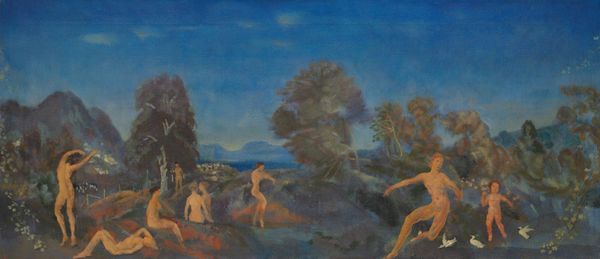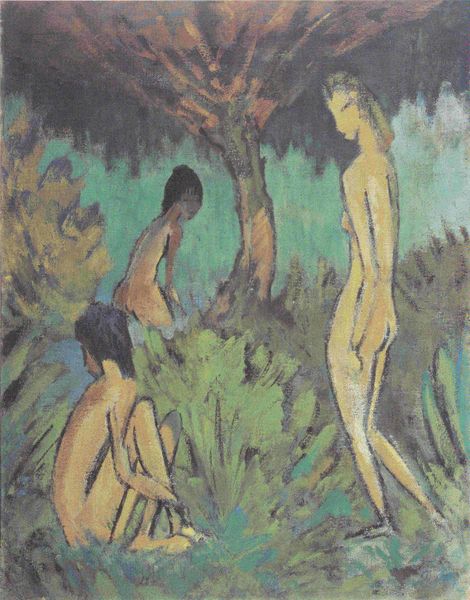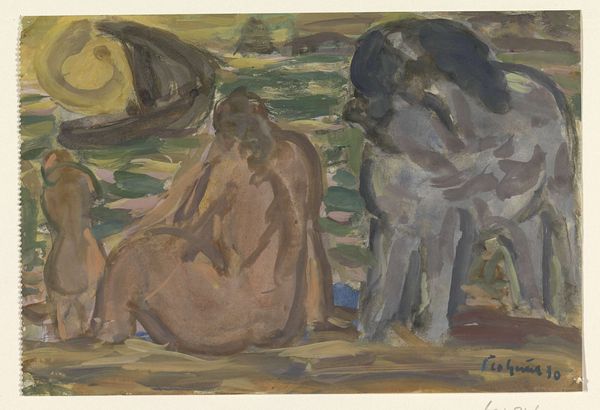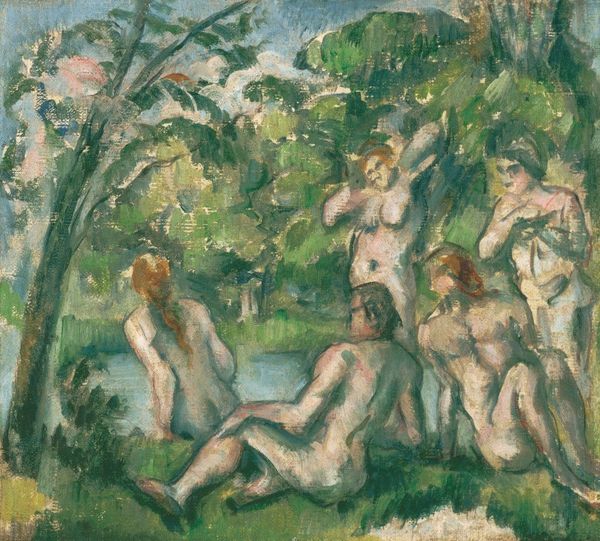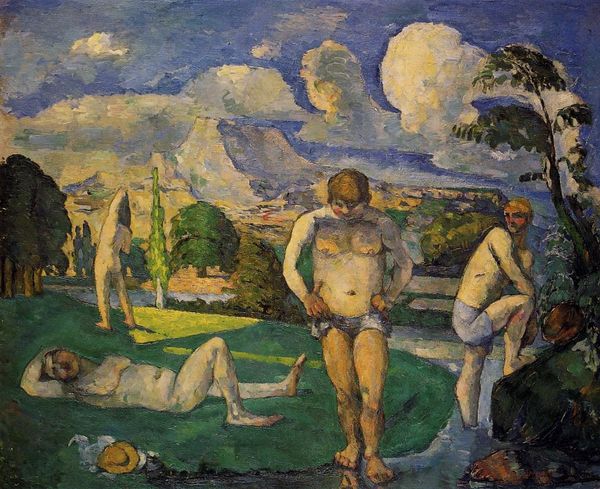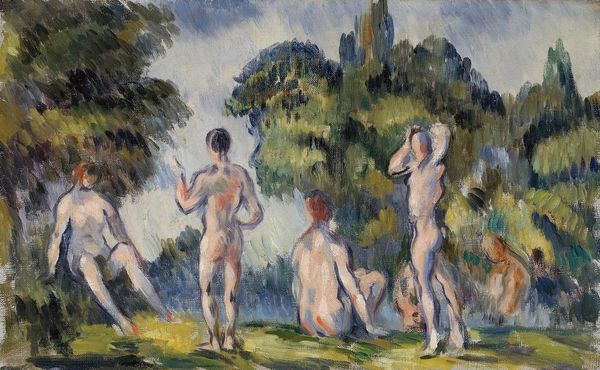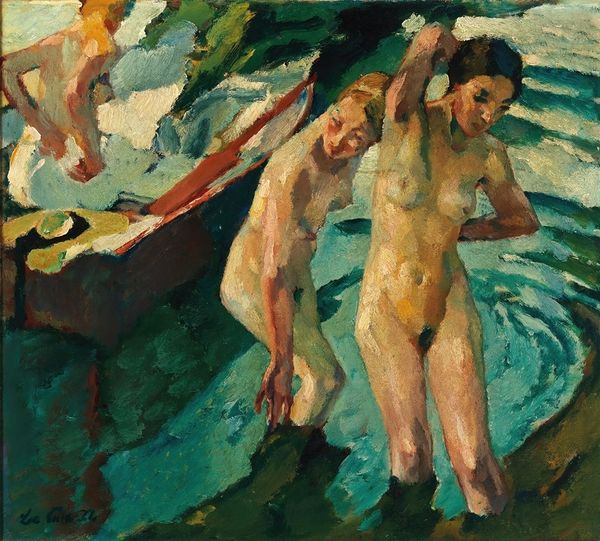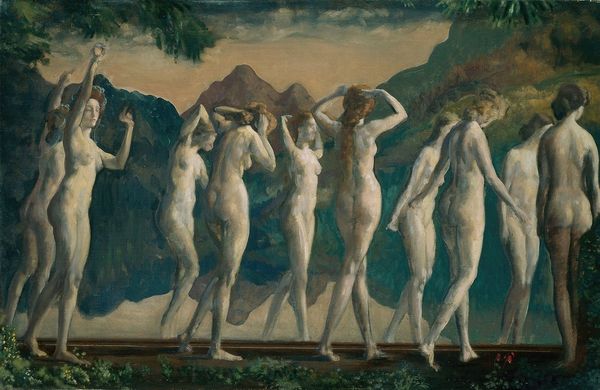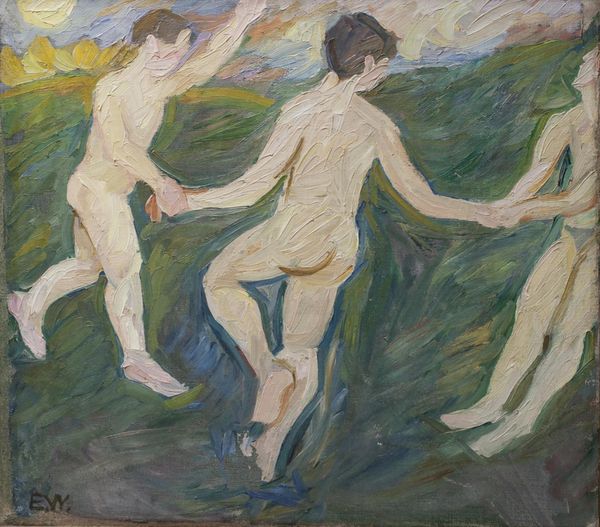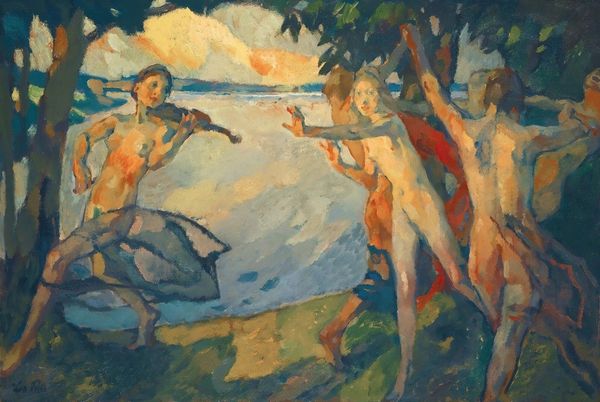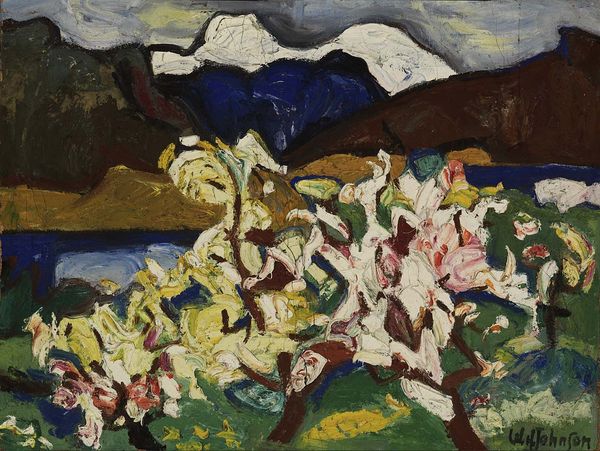
painting, oil-paint
#
painting
#
oil-paint
#
landscape
#
painted
#
figuration
#
oil painting
#
mythology
#
symbolism
#
history-painting
#
nude
Copyright: Public Domain: Artvee
Curator: This is Arthur Bowen Davies’ "The Hesitation of Orestes," painted circa 1915 using oil paints. What are your immediate thoughts? Editor: There's something theatrical about it, isn’t there? The figures seem posed against that rather stagey landscape. It has an almost dreamlike quality, like a memory. Curator: Yes, the symbolism is key here. Davies was deeply interested in mythology and history painting, referencing classical themes to explore psychological states. Think about the societal influences present at the time, right before World War One— the anxieties and yearning for a pastoral idyll. Editor: Interesting! It seems to me that the materiality of the work contradicts this, somewhat. Look closely at the surface – it’s quite roughly painted, almost unfinished in places. How does this texture, the actual stuff of the painting, influence our reading of the figures? I mean, it isn’t realistic right? Curator: Well, this ties into Davies’ broader artistic project. He was advocating for an "American" art, an aesthetic less reliant on European academic traditions. Perhaps he found such art both limiting and exclusionary in terms of its ability to appeal to larger demographics of people. This might involve embracing a more hands-on, tactile approach to painting, disrupting established hierarchies. Editor: So you're seeing the handling of the paint itself as a deliberate act of cultural disruption. I suppose that does shift my interpretation. The imperfections, the rawness, become intentional challenges to conventional notions of beauty and finish within artistic institutions and tastes of collectors. Curator: Exactly. By embracing a visible, tangible process, Davies questions the value placed on illusionistic perfection. The canvas becomes a record of the artist’s labor and decision-making, connecting the artwork to a specific time, place, and mode of production. The socio-political context of the art. Editor: That really changes how I view it. It becomes more than just a scene from mythology. Curator: Precisely. The artwork invites us to examine the broader cultural and material conditions shaping artistic expression, its processes and impacts on both its audience and creators. Editor: Food for thought indeed. Thank you for shifting my focus towards such intriguing details about material production and social disruption.
Comments
No comments
Be the first to comment and join the conversation on the ultimate creative platform.
